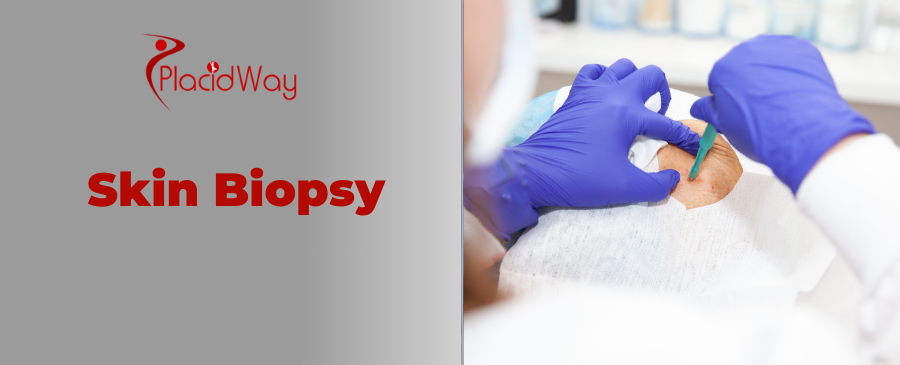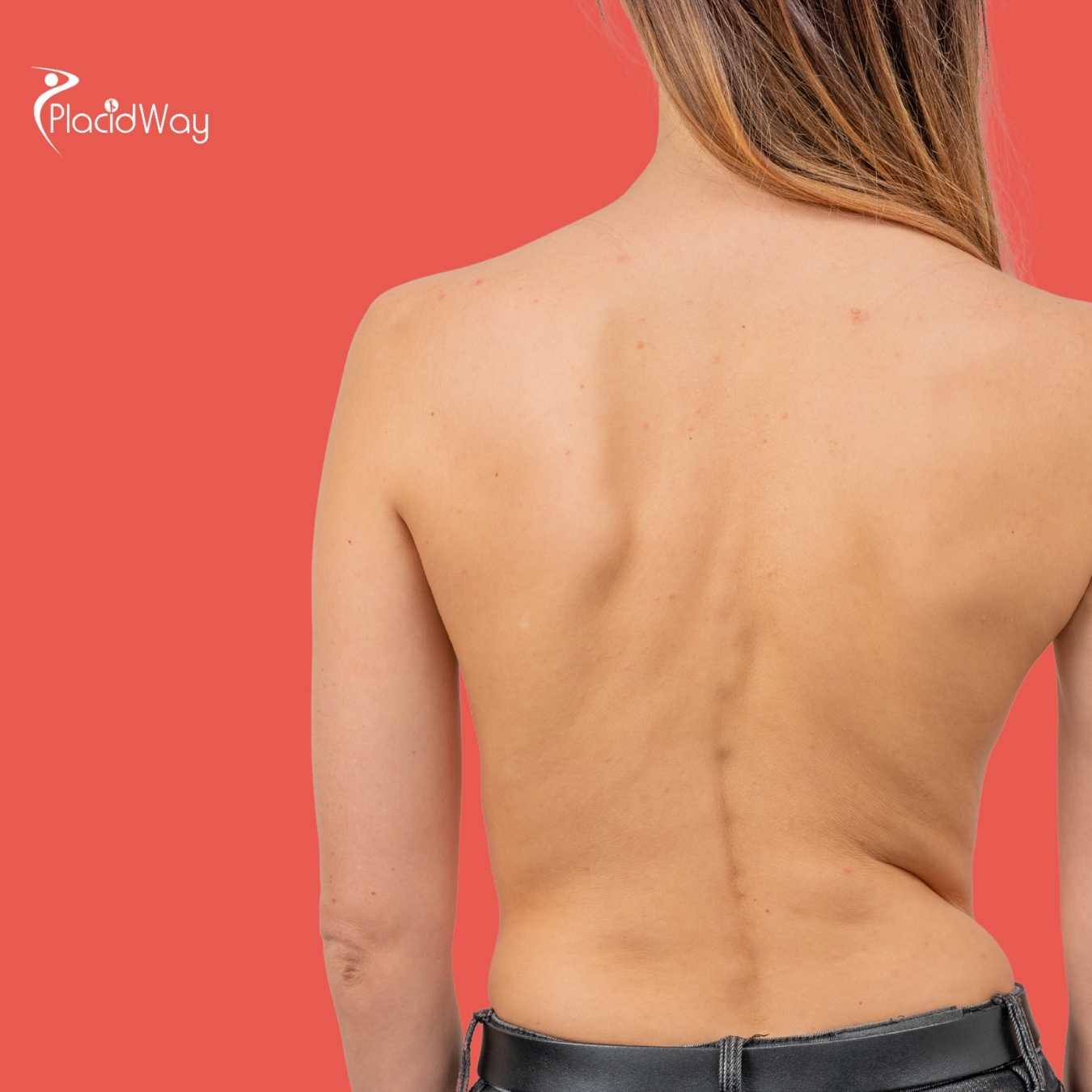
Is That Skin Spot Worrying You? Understanding Skin Biopsy & Your Options
Finding an unusual spot, mole, or rash on your skin can be concerning. It’s natural to wonder what it is and what steps you should take. Often, the path to understanding and peace of mind involves a procedure called a skin biopsy. This common, minimally invasive diagnostic tool allows doctors to examine a small piece of your skin under a microscope to determine its nature.
Whether you’re dealing with a persistent rash, a changing mole, or a newly appeared growth, a skin biopsy provides crucial information for accurate diagnosis and effective treatment planning. It’s the gold standard for identifying various skin conditions, from inflammatory diseases to different types of skin cancer.
For many, the thought of a medical procedure, especially one that could indicate something serious, can be daunting. You might be searching for information on "suspicious mole," "skin lesion diagnosis," or "skin cancer screening." Our goal is to demystify the skin biopsy process, explaining what to expect, why it’s done, and what your options are, including exploring high-quality, affordable care through medical tourism.
If you're considering a skin biopsy and looking for accessible, top-tier medical services, exploring international options might be a wise choice. Many reputable clinics worldwide offer excellent dermatological care at a fraction of the cost, making quality diagnostics more attainable. Let's delve into everything you need to know about skin biopsies.
What are the common skin symptoms that might require a skin biopsy?
Your skin is your body's largest organ, and it can tell a story about your health. Certain changes warrant closer investigation, often leading to a skin biopsy. Here are the key symptoms that should prompt a visit to a dermatologist:
- Changing Moles: This is perhaps the most crucial symptom. Look for moles that are new, growing, changing shape (especially becoming asymmetrical or having irregular borders), changing color (especially darkening or becoming multi-colored), or becoming itchy, painful, or bleeding. The "ABCDEs of Melanoma" are vital to remember:
- Asymmetry: One half doesn't match the other.
- Border Irregularity: Edges are ragged, notched, or blurred.
- Color Variation: Uneven color, shades of black, brown, and tan, or patches of pink, red, white, or blue.
- Diameter: Larger than 6 millimeters (about the size of a pencil eraser).
- Evolving: Any change in size, shape, color, elevation, or new symptoms like bleeding, itching, or crusting.
- Persistent Sores or Wounds: A sore that doesn't heal within a few weeks, especially if it's on sun-exposed skin, could be a sign of skin cancer.
- New or Unusual Growths: Any new bump, lump, or lesion that looks different from your other moles or skin. This could include pearly bumps, scaly patches, or dome-shaped growths.
- Chronic Rashes: Rashes that don't respond to typical treatments, or have an unusual appearance, might require a biopsy to diagnose underlying inflammatory conditions or certain types of lymphoma.
- Inflamed Lesions: Red, swollen, or painful spots that don't resolve.
- Unexplained Skin Discoloration: Areas of skin that have changed in pigmentation without an obvious cause.
If you notice any of these "unusual mole" or "changing skin lesion" symptoms, it's always best to consult a medical professional promptly. Early detection is key for many skin conditions, particularly skin cancer.
What causes suspicious skin changes and who is at risk?
Understanding the causes and risk factors behind suspicious skin changes can empower you to take preventative measures and recognize when a biopsy might be necessary. While not all skin changes are sinister, many are linked to a few key factors:
- Ultraviolet (UV) Radiation Exposure: This is by far the leading cause of skin cancer. Both natural sunlight and artificial tanning beds emit UV rays that can damage the DNA in skin cells, leading to uncontrolled growth. People with a history of frequent sun exposure, severe sunburns (especially in childhood), or regular tanning bed use are at higher risk. This is why "sun exposure" is a top concern for "skin cancer."
- Genetics and Family History: If you have a close relative (parent, sibling, child) who has had melanoma or another type of skin cancer, your risk significantly increases. Certain inherited conditions can also predispose individuals to skin cancers.
- Skin Type: Individuals with fair skin, light-colored eyes, red or blonde hair, and those who freckle easily are more susceptible to sun damage and skin cancer. They have less melanin, which provides some natural protection against UV rays.
- Number of Moles: Having a large number of moles (over 50-100) or atypical (dysplastic) moles increases the risk of developing melanoma.
- Weakened Immune System: People with compromised immune systems, such as organ transplant recipients or those with HIV/AIDS, are at a higher risk for various skin cancers.
- Age: The risk of skin cancer increases with age, as the cumulative effect of sun exposure and other factors takes its toll.
- Human Papillomavirus (HPV): Certain types of HPV are associated with an increased risk of squamous cell carcinoma, especially on the genitals and around the anus.
- Previous Skin Cancer: If you've had skin cancer before, you have a higher risk of developing new ones.
Understanding these risk factors, such as "genetics skin cancer" or "fair skin risk," is crucial for both prevention and knowing when to seek professional evaluation for a "skin growth."
What are the different types of skin biopsies?
The type of skin biopsy chosen depends on the lesion's size, location, and the suspected condition. Each method has specific advantages:
- Shave Biopsy:
- How it's done: The doctor uses a sterile razor blade or scalpel to shave off the top layers of skin. This is a superficial procedure.
- When it's used: Ideal for suspected basal cell carcinoma, squamous cell carcinoma in situ, seborrheic keratoses, skin tags, or rashes where the pathology is mainly in the upper epidermis.
- Keywords: "shave biopsy," "superficial skin sample."
- Punch Biopsy:
- How it's done: A special circular tool, resembling a tiny cookie cutter, is used to remove a small cylinder of skin, including the epidermis, dermis, and sometimes subcutaneous fat. Stitches may or may not be needed to close the hole.
- When it's used: Excellent for diagnosing rashes, inflammatory skin conditions, and suspicious moles where a deeper sample is required to assess the full thickness of the skin.
- Keywords: "punch biopsy," "full-thickness skin biopsy."
- Excisional Biopsy:
- How it's done: The entire suspicious lesion, along with a small margin of surrounding healthy tissue, is cut out using a scalpel. The wound is then closed with stitches.
- When it's used: Often performed when melanoma is strongly suspected, or when a previous biopsy was inconclusive, and complete removal is preferred for diagnosis and sometimes treatment in one go.
- Keywords: "excisional biopsy," "complete mole removal," "wide local excision."
- Incisional Biopsy:
- How it's done: Similar to an excisional biopsy, but only a representative portion of a very large lesion or tumor is removed, not the entire growth. The wound is then stitched.
- When it's used: For very large lesions where removing the whole thing might be too invasive or complex, or when the doctor needs a sample to confirm the diagnosis before planning a larger surgery.
- Keywords: "incisional biopsy," "partial skin lesion removal."
Each type of biopsy is performed under local anesthetic, meaning the area will be numbed, and you'll experience minimal discomfort during the procedure itself.
Who is a candidate for a skin biopsy?
A skin biopsy is indicated for various reasons, making many individuals potential candidates. You are likely a candidate for a skin biopsy if your doctor observes or you report any of the following:
- Suspicion of Skin Cancer: This is the most common reason. If a dermatologist suspects basal cell carcinoma, squamous cell carcinoma, or melanoma based on visual inspection, a biopsy is essential for definitive diagnosis. You might be searching "when do I need a skin biopsy for skin cancer."
- Undiagnosed Rashes or Inflammatory Conditions: When a rash persists, spreads, or doesn't respond to standard treatments, a biopsy can help distinguish between conditions like psoriasis, eczema, lupus, or other inflammatory dermatoses. This covers concerns like "biopsy for skin rash."
- Unusual Growths or Lesions: Any skin lesion that is atypical in appearance, grows rapidly, bleeds easily, or causes symptoms like itching or pain.
- Pre-cancerous Conditions: Sometimes a biopsy is done to confirm conditions like actinic keratoses (pre-cancers that can turn into squamous cell carcinoma) or dysplastic nevi (atypical moles that can be precursors to melanoma).
- Infections: In some cases, a biopsy might be used to diagnose fungal, bacterial, or viral skin infections that are not responding to typical treatments or have unusual presentations.
Ultimately, the decision to perform a skin biopsy is made by your dermatologist after a thorough examination of your skin and a discussion of your medical history. It's a relatively simple procedure that provides invaluable information for "diagnosing skin cancer" and other conditions.
What is the recovery like after a skin biopsy?
The "skin biopsy healing time" is generally short, and the recovery process is quite manageable for most people. Here's what you can typically expect:
- Immediate Aftercare:
- The biopsy site will be covered with a bandage, which you'll need to keep dry for the first 24-48 hours.
- You might feel a slight stinging or mild soreness once the local anesthetic wears off, which can usually be managed with over-the-counter pain relievers.
- Some slight bleeding or oozing is normal for the first day.
- Wound Care at Home:
- Your doctor will provide specific "after biopsy care" instructions. Generally, you'll be advised to gently clean the area daily with mild soap and water, then apply a fresh bandage and possibly an antibiotic ointment to prevent infection.
- Avoid strenuous activities or movements that could stretch the skin around the biopsy site, especially if you have stitches.
- Keep the area out of direct sunlight to prevent hyperpigmentation or delayed healing.
- Stitches (if applicable):
- If you had a punch or excisional biopsy, you might have stitches. These are typically removed by a nurse or doctor in 1 to 2 weeks, depending on the location of the biopsy.
- Healing and Scarring:
- The wound will form a scab and heal over several weeks. The exact "skin biopsy healing time" depends on the biopsy type and location.
- Most skin biopsies result in a small, often barely noticeable "scarring after skin biopsy." The appearance of the scar will improve over time, often fading significantly within 6-12 months. Factors like the depth of the biopsy, your skin type, and how well you care for the wound can influence the final scar.
Always follow your doctor's specific post-biopsy instructions to ensure proper healing and minimize the risk of complications.
What are the risks and potential side effects of a skin biopsy?
While a skin biopsy is a routine and generally very safe procedure, like any medical intervention, it carries a few potential risks and side effects. Being aware of these can help you monitor your recovery and know when to contact your doctor:
- Pain or Discomfort: After the local anesthetic wears off, you might experience mild pain or tenderness at the biopsy site. This is usually manageable with over-the-counter pain relievers.
- Bleeding: Some minor "bleeding skin biopsy" is normal immediately after the procedure and can continue as slight oozing for a few hours. Rarely, persistent or heavy bleeding might occur, especially if you are on blood-thinning medications.
- Bruising and Swelling: It's common to have some bruising or mild swelling around the biopsy site, which typically resolves within a few days.
- Infection: Although sterile techniques are used, there's a small risk of "infection after biopsy." Signs of infection include increasing redness, warmth, swelling, pus discharge, or fever. Following wound care instructions carefully can significantly reduce this risk.
- Scarring: All skin biopsies will leave some form of a scar. The size and visibility of the scar depend on the type of biopsy, its depth, location, and your individual skin's healing properties. While most scars are small and fade over time, some individuals may develop keloids or hypertrophic scars (raised, thickened scars).
- Allergic Reaction: Rarely, a person might have an allergic reaction to the local anesthetic used to numb the area, or to adhesive in bandages.
- Nerve Damage: In very rare cases, if a biopsy is performed near a nerve, temporary or permanent nerve damage leading to numbness or weakness in the area could occur. This is extremely uncommon in typical skin biopsies.
Your doctor will discuss these potential "skin biopsy complications" with you before the procedure. It's important to report any unusual or worsening symptoms during your recovery.
How much does a skin biopsy cost worldwide?
Understanding the "skin biopsy cost" can be a significant factor in your decision-making, especially if you're uninsured or seeking more affordable options. Prices can fluctuate wildly depending on geographic location, the complexity of the biopsy, whether pathology fees are included, and the healthcare system of the country. Here's a general overview:
| Country | Estimated Cost Range (USD) | Notes |
|---|---|---|
| USA | $500 - $1,500+ | Highly variable, often higher without insurance. Includes physician fee, facility fee, and pathology. "Skin biopsy cost USA" can be substantial. |
| Canada | $400 - $1,000 | Generally lower than USA. Public healthcare covers residents, but private options or tourists pay out-of-pocket. |
| UK (Private) | £300 - £800 ($380 - $1,000) | Private clinics offer quicker access. NHS covers residents. |
| Mexico | $100 - $400 | Very affordable, popular for medical tourists seeking "affordable skin biopsy." High-quality clinics, especially near border regions. |
| Turkey | $150 - $500 | Emerging medical tourism hub. Competitive pricing with modern facilities. "Skin biopsy cost Turkey" is a common search for medical travelers. |
| India | $100 - $350 | Extremely cost-effective, with many English-speaking doctors and internationally accredited hospitals. |
| Thailand | $200 - $600 | Known for excellent patient care and modern facilities at lower prices. |
These figures are estimates and can vary based on the specific clinic, dermatologist's fees, anesthesia type, and the complexity of the pathology lab analysis. It's always recommended to get a detailed quote from your chosen provider.
Why consider a skin biopsy abroad for diagnosis?
For many individuals, seeking medical care abroad, even for a relatively minor procedure like a skin biopsy, offers compelling advantages:
- Significant Cost Savings: This is often the primary driver. As seen in the cost comparison, procedures can be dramatically cheaper in countries known for medical tourism. This is particularly beneficial for those without adequate insurance coverage or facing high deductibles in their home country. You can achieve "affordable diagnostic abroad" and save hundreds, if not thousands, of dollars.
- Access to High-Quality Care: Many international hospitals and clinics cater to medical tourists, investing heavily in modern equipment, infrastructure, and internationally trained staff. They often boast accreditations from bodies like Joint Commission International (JCI), ensuring "quality healthcare overseas."
- Reduced Waiting Times: In some countries, public healthcare systems can have long waiting lists for specialist appointments and diagnostic procedures. Traveling abroad can provide immediate access to dermatologists and timely biopsies, alleviating anxiety and allowing for quicker diagnosis and treatment.
- Privacy and Anonymity: Some patients prefer the discretion that comes with receiving medical treatment away from their local community.
- Opportunity for a "Health Vacation": While a biopsy isn't a vacation, some patients combine their medical trip with leisure travel, turning a necessary procedure into a more positive overall experience.
- Advanced Technology and Expertise: Certain clinics abroad specialize in dermatology and may offer cutting-edge diagnostic tools or have highly experienced dermatopathologists who are experts in interpreting complex biopsy results.
Exploring "medical tourism skin biopsy" options means evaluating these benefits against your personal needs and preferences.
Which countries offer the best value for skin biopsy procedures?
When searching for "best countries for skin biopsy" and "top medical tourism destinations dermatology," several nations consistently stand out for their blend of affordability, quality, and patient-centric services:
- Mexico:
- Why: Proximity to the US, highly competitive prices, and a strong focus on medical tourism, especially in border cities and popular destinations like Cancun. Many dermatologists are US-trained or fluent in English.
- Value: Excellent option for immediate, affordable access to diagnostic procedures.
- Turkey:
- Why: A rapidly growing medical tourism hub, particularly for European and Middle Eastern patients. Istanbul and Ankara offer state-of-the-art hospitals, JCI-accredited facilities, and experienced dermatologists.
- Value: Very attractive price-to-quality ratio, often including luxurious patient experiences. Many people search for "skin biopsy Turkey" for this reason.
- India:
- Why: Known for its highly skilled medical professionals, advanced technology, and exceptionally low costs. Major cities like Delhi, Mumbai, and Chennai have world-class hospitals. English is widely spoken in medical settings.
- Value: Unbeatable affordability for diagnostic and complex procedures, with a vast network of specialists.
- Thailand:
- Why: Famous for its hospitality, Thailand also boasts excellent private hospitals, particularly in Bangkok, Phuket, and Chiang Mai. The quality of care is high, and prices are very reasonable.
- Value: Combines medical excellence with a pleasant travel experience.
- Malaysia and South Korea:
- Why: These countries also offer very high standards of medical care and advanced technology, often at prices lower than Western nations, though sometimes slightly higher than the top four listed above.
When selecting a destination, consider not just the cost, but also clinic accreditations, doctor's qualifications, language barriers, and ease of travel.
What to expect when traveling for this procedure abroad?
"Traveling for medical procedure" requires careful planning, but with a good medical tourism facilitator or direct contact with the clinic, it can be a smooth process. Here's what you can generally expect:
- Initial Consultation & Quote:
- You'll typically start by contacting a medical tourism company (like PlacidWay) or a specific clinic directly.
- You'll provide your medical history, photos of the lesion, and any previous reports.
- The medical team will review your case, suggest the appropriate biopsy type, and provide a detailed quote including the procedure, pathology, and possibly follow-up. Many offer virtual consultations.
- Travel Planning:
- Once you accept the quote, you'll need to book flights and accommodation. Facilitators often assist with this, including airport transfers.
- Ensure your passport is valid and check visa requirements for your chosen destination.
- Pack light but include any personal medications and comfortable clothing suitable for recovery.
- Arrival and Pre-Procedure:
- Upon arrival, you'll typically be met and transferred to your accommodation or directly to the clinic for a face-to-face consultation with the dermatologist.
- The doctor will examine you, confirm the biopsy plan, and answer any questions. You'll sign consent forms.
- The Biopsy Procedure:
- The biopsy itself is quick, usually taking 15-30 minutes, performed under local anesthetic.
- You'll receive post-procedure care instructions and materials (bandages, ointment).
- Recovery and Results:
- You'll likely have a follow-up appointment for stitch removal (if applicable) and to discuss the pathology results. Depending on the lab turnaround time, you might need to stay in the country for a few days to two weeks for results, or they may be sent to you electronically.
- Plan for a few days of relaxation post-procedure before extensive sightseeing.
- Follow-up Care:
- Ensure you understand the plan for follow-up care, whether it's through remote consultations or via your local doctor.
A good "international patient guide" will emphasize clear communication with the medical team and facilitator throughout this "medical tourism planning" journey.
How to ensure safety and quality when getting a skin biopsy abroad?
Ensuring "safety and quality abroad" is paramount when considering any medical procedure overseas. Here’s a checklist to guide your research and decision-making:
- Accreditation Matters: Look for hospitals and clinics that have international accreditations, particularly from the Joint Commission International (JCI). JCI accreditation signifies that the facility meets rigorous international standards for patient safety and quality of care. It's a gold standard for "accredited clinics abroad."
- Verify Doctor Credentials:
- Research the dermatologist's qualifications, experience, and specialization. Are they board-certified? Where did they train? How many skin biopsies do they perform?
- Check for memberships in international dermatological societies.
- Read Patient Reviews and Testimonials: Look for independent reviews and patient experiences on trusted medical travel platforms or forums. While individual experiences vary, patterns can reveal overall quality and patient satisfaction.
- Use Reputable Medical Tourism Facilitators: Companies like PlacidWay specialize in connecting patients with vetted, high-quality international providers. They can offer guidance, handle logistics, and act as an advocate, which is crucial for "finding reliable overseas doctors."
- Ask for Detailed Quotes and Inclusions: Ensure the quote is comprehensive, covering the biopsy procedure, pathology fees, anesthesia, follow-up consultations, and any required medications. Avoid hidden costs.
- Ensure Clear Communication: Confirm that the clinic has English-speaking staff (or offers translation services) and a clear communication channel for pre- and post-procedure questions. Misunderstandings due to language barriers can compromise care.
- Review Sterilization Protocols: While harder to verify remotely, accredited facilities will adhere to strict sterilization and infection control standards. You can inquire about their practices.
- Emergency Plan: Understand what happens in case of an unforeseen complication or emergency. What are the hospital’s protocols?
- Trust Your Gut: If something feels off during your research or communication, pause and reconsider.
Thorough due diligence is your best tool for a "safe medical tourism" experience.
Can I read patient success stories from skin biopsies performed abroad?
Finding highly specific "patient success stories" for individual skin biopsies performed abroad can be challenging due to patient privacy regulations and the relatively common nature of the procedure. However, the broader field of "medical tourism success stories" provides ample evidence of positive experiences for diagnostic procedures and treatments performed overseas.
What patients consistently highlight in their testimonials about seeking care abroad includes:
- Financial Relief: Many patients share stories of how they saved thousands of dollars compared to what they would have paid in their home country, making crucial diagnostic procedures like skin biopsies accessible when they otherwise couldn't afford them. This is a recurring theme for "affordable diagnostic abroad."
- Timely Diagnosis: Patients frequently express gratitude for getting appointments and biopsies quickly, avoiding long waiting lists that caused anxiety and delayed treatment in their home countries.
- High-Quality Facilities and Care: Stories often describe modern, clean hospitals, advanced equipment, and attentive, compassionate medical staff who are fluent in English. Patients appreciate the personalized care and the feeling of being well-looked after. This contributes to a "positive experience overseas treatment."
- Expert Doctors: Testimonials often praise the expertise and professionalism of the dermatologists and pathologists, many of whom have international training and certifications. Patients feel confident in the accuracy of their diagnosis.
- Overall Positive Experience: Beyond the medical aspects, patients often share how the entire travel experience, from airport pickup to comfortable accommodation, contributed to a stress-free journey, allowing them to focus on their health.
While you might not find a "John Doe had a skin biopsy in Turkey and loved it" specific story, the collective experience of millions of medical tourists underscores the viability and benefits of seeking diagnostic care like a skin biopsy in well-regarded international destinations. Reputable medical tourism facilitators can often share aggregated patient feedback or connect you with former patients (with their consent) for broader insights into the experience.
Take the Next Step with PlacidWay
Ready to explore treatment options abroad? Discover top clinics, compare prices, and get a free quote tailored to your needs with PlacidWay.
Skin Care, Skin Rejuvenation








.jpg)

Share this listing